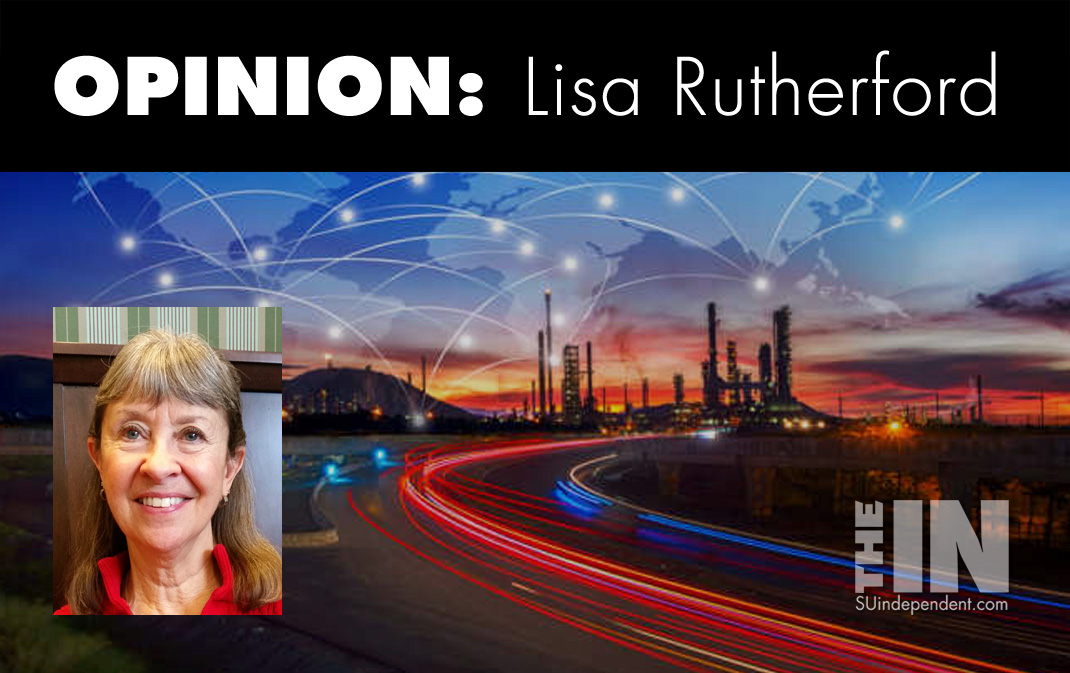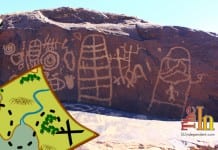
Lighting Issue Big Deal In Utah
– By Lisa Rutherford –
Whether it is at the local or state level, lighting is a big deal. For three months, Ivins City where I live has been struggling with revamping a lighting ordinance. Many concerns have been expressed: lighting location and brightness, vegetation lighting, holiday lighting (which holidays and for how long), lighting for safety (so that people do not get run down in crosswalks by cars or attacked by perpetrators), and perhaps primary in the minds of many “freedom to do as I please on my property.” People concerned about peeping Toms are speaking out too; an easier solution such as drawing blinds comes to mind for me, but I digress! The point is that many aspects of this issue are being raised and discussed. On the other side are those concerned with the beauty of our area and the night sky while not having the light of others affect their own property and views.
Many people moved to Ivins specifically to view the night sky and enjoy the darkness which also promotes good sleep. Given the lack of sleep on the part of many citizens that has been reported frequently, this is also an important safety issue.
In any case, it has been a challenging effort, and I give the Ivins Planning Commission members credit for being willing to deal with it. There are passions on both sides. I mean, people want to light their trees and shrubs. It is a little crazy. I understand the desire to do what a person wants on their own property, but when that affects neighbors as does fugitive light from excessive lighting, then some consideration to one’s neighbors is necessary.
While this local effort has been underway, SB 61 “Outdoor Advertising Amendments” and sister bill SB 144 “Billboard Restrictions Amendments” have garnered much attention during the legislative session. Both bills take away discretion from local communities for setting standards for digital signs, signs that seem to already proliferate and some promoters want more – particularly the billboard lobby that’s strong in Utah.
It seems to me that already our state is awash in billboards – billboards that cause distraction for drivers, destroy landscape views that have made Utah famous, and wash out our precious night sky views in fast-growing areas such as St. George and Washington City.
As is the usual case, both bills are long, detailed and basically inscrutable to the average citizen and perhaps even many legislators which is why, given the volume of bills run annually (over 1000!), many legislators don’t read the bills but rather rely on proponents and those they think know more than they to advise them. Given that caveat, both bills seem to encourage the use of these signs rather than restricting which would be the more reasonable thing to do given the light pollution we are already dealing with and which will only get worse with growth. There is a strong lobby in Utah that is working to push this through, a lobby that gives generously to legislators and $40,000 to Governor Cox in the last go-round.
These bills undermine local decision-making and costs taxpayers. SB144 prohibits a municipality, when conveying municipal property, from restricting the purchaser’s ability to place a billboard on the property. If a billboard owner successfully sues for injury because a municipality has worked with a property owner or restricted placement of a billboard in a property conveyance, SB 144 requires the municipality to pay the greater of actual damages or $350,000, whichever is greater, and attorney fees.
Cities such as Ivins should be able to set their own standards when it comes to lighting and not face punitive and expensive treatment. It appears that this bill would significantly impact private property owners who want to negotiate with municipalities on billboard placement and locally elected officials’ ability to balance the rights of billboard owners with community impacts.
Both SB144 and SB61 take away local control when it comes to lighting – lighting that is causing light pollution, interrupting sleep, affecting animals and plants and needs to have more control not less as this state grows. Many of our areas pride themselves on the night sky views which draw visitors but which will be diminished if we continue down this path.
I listened to committee hearings on both bills. SB61’s sponsor argued that it’s about “equality” in the advertising space and that cities are allowing businesses to have on-premises digital boards but not allowing off-premises digital boards thereby holding the industry back. It would not affect new boards, only existing that could be upgraded to digital, although some committee members thought that was not clear in the bill. By far most of the public comments were against the bills with only company representatives and two former legislators speaking in favor. One former legislator pointed to the “social” benefit of digital signs that advertise affordable housing, suicide prevention, Amber Alerts, and more, but there are many other ways to get that information communicated. One committee senator not in favor of SB61 mentioned the “pay to play” aspect of the legislation and was nicely but soundly rebuked by the committee chair, who was apparently sensitive about the issue.
I heard billboard company representatives asserting this would limit their companies from growing “organically.” Hard to imagine how that would happen. These companies can lobby freely with their money showing they are not hurting financially. Just because existing non-digital billboards are limited from becoming digital does not mean the death knell for the industry. There are other ways to advertise than lighting up our beautiful state with digital billboards. They are not only offensive because of their enormous amount of light but because they are distracting to drivers, and I think we can all agree that drivers have enough distractions already. Companies say new technology can limit the amount of light, but I certainly have not seen the benefits of that technology anywhere in the St. George area.
Comments against the bills were not just from individual citizens and non-profits working to protect the beauty of Utah such as the National Parks Conservation Association. The Utah League of Cities and Towns, Utah Transit Authority, Utah Association of Counties, UDOT, Layton City Council, and Salt Lake County all had representatives speaking against the bills.
Both bills were passed out of committee but not without concerns on the part of senators who expected further work to be done on the bills before they would vote to pass once the bills reach the Senate floor. SB144 has been voted down by the Senate. Perhaps we will get that lucky with SB61, too, which is currently circled.
The University of Utah’s Department of Physics and Astronomy has created a video about light pollution that I encourage all citizens to watch: https://www.youtube.com/watch?v=lxLZacW_ric.
We have a beautiful state. We don’t need to create blight on the beauty that exists, and which should be maintained for those who come after us.
Viewpoints and perspectives expressed throughout The Independent are those of the individual contributors. They do not necessarily reflect those held by the staff of The Independent or our advertising sponsors. Your comments, rebuttals, and contributions are welcome in accordance with our Terms of Service. Please be respectful and abide by our Community Rules. If you have privacy concerns you can view our Privacy Policy here. Thank you!
Click here to submit an article, guest opinion piece, or a Letter to the Editor




